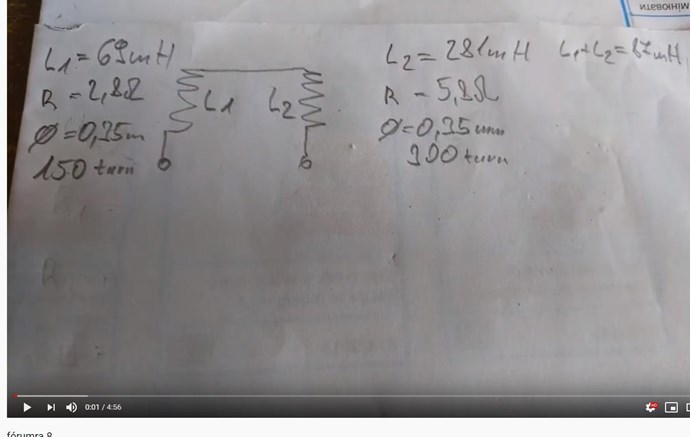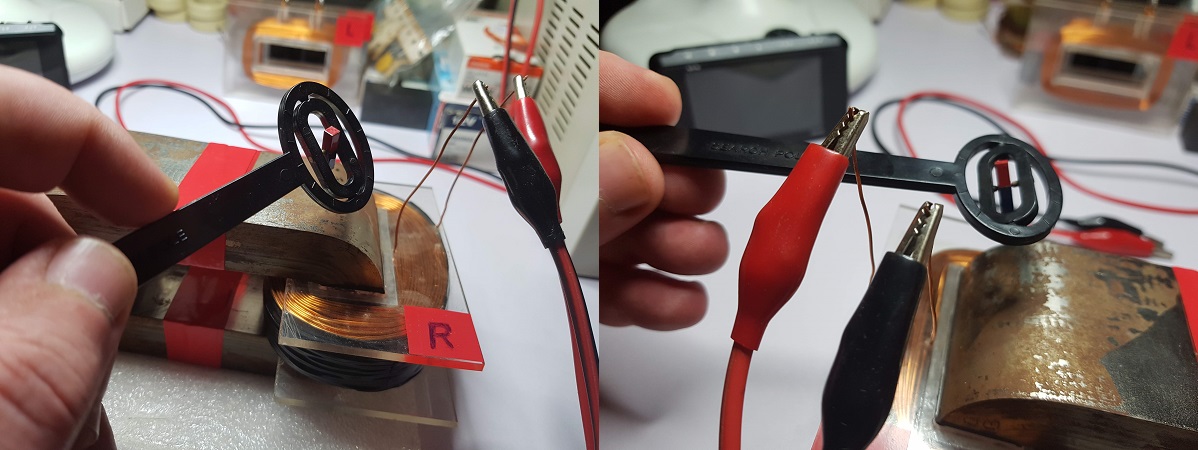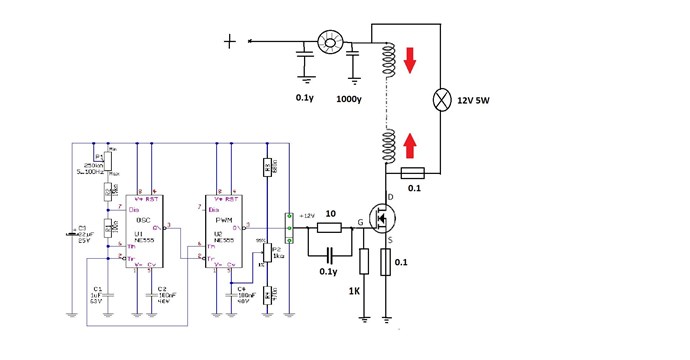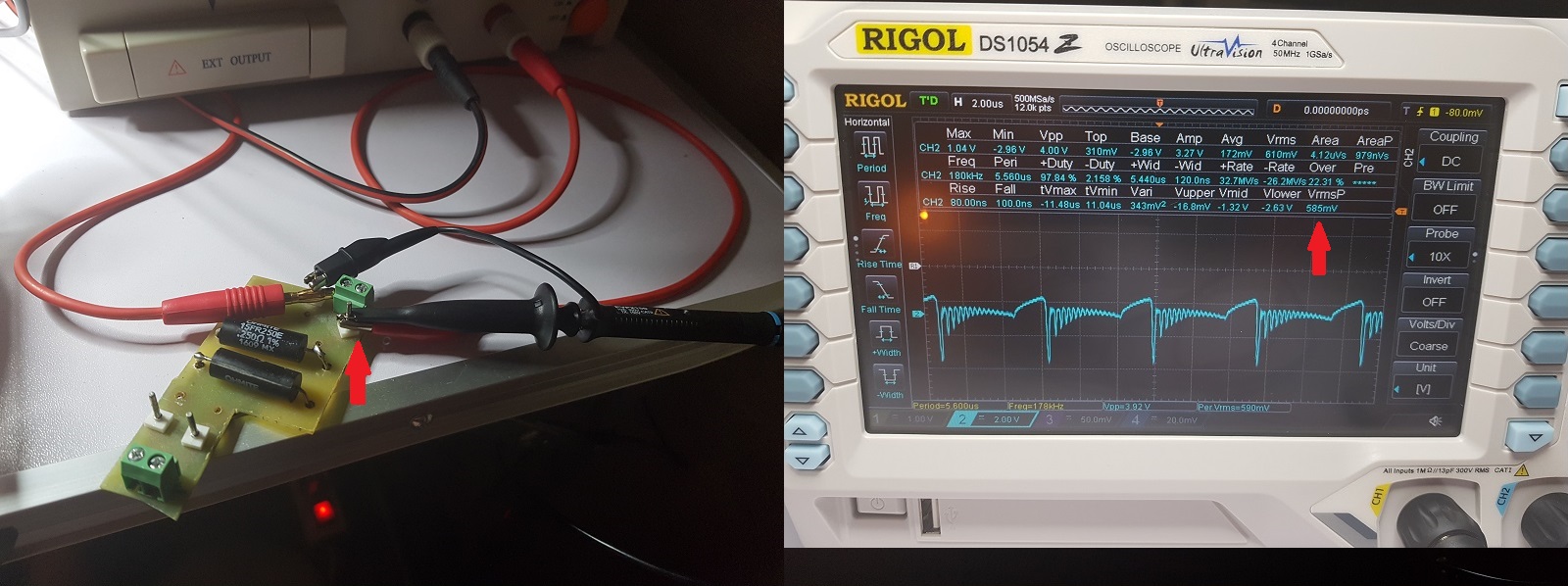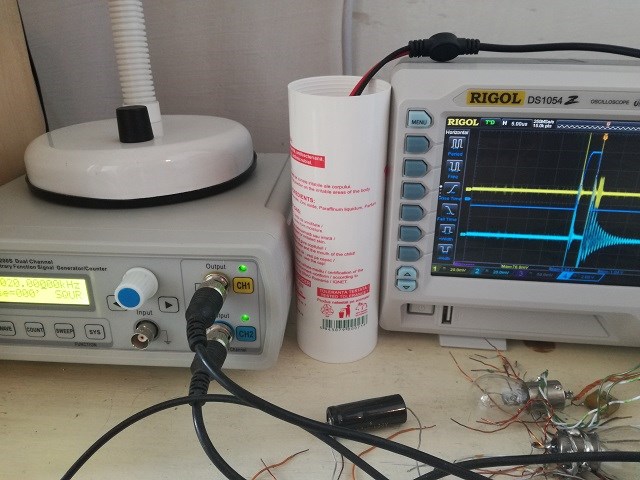Fighter
posted this
09 September 2019
And as an update, seems today was not a good day for science... 🙂
I started some tests and forgot to limit the testing time to 4-5 minutes as usually, analyzing the scope I forgot about the limit and the MOSFET and its radiator in the MOSFET driver got excessively hot. So the last IRFP250N I had in the driver is gone:
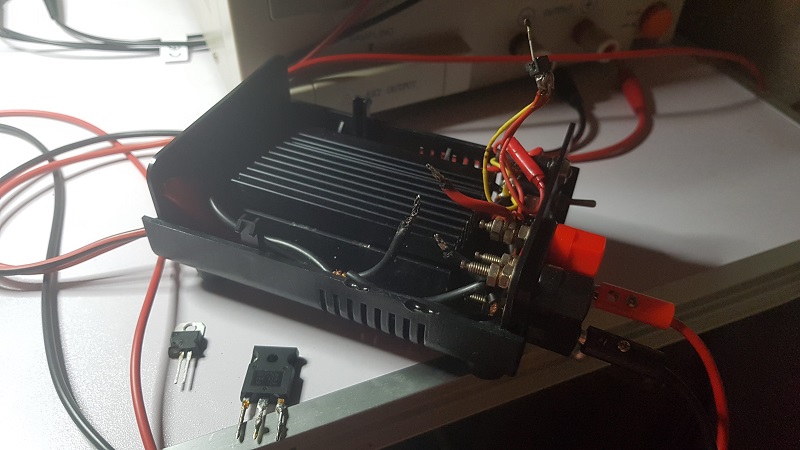
As no electronics store was open today (Sunday) and I didn't had another spare MOSFET I couldn't do anything about this.
So I decided it's time to start working on upgrading the MOSFET driver's cooling system, to make it active using the two coolers I bought some months ago but I always postponed to make this upgrade.
This upgrade is work in progress, this is how it will look like:

They will be powered separately (to avoid any interference with the circuit, I don't want ZPM to try also to send power back to the coolers too) using a small 12V/1.2A transformer and then I'll convert to DC using a GBU406 bridge-rectifier.
Something like this:

Probably I'll add also a electrolytic capacitor even if coolers seems to work fine without it...
So until I find some time to go buy some IRFP250N MOSFETs, install them in the driver and finish this upgrade I'm not able to continue the experiments, I'll try to do all these if I find some free time during this week.
But even if i wasn't able to do experiments today there is a good thing about what happened, with this upgrade to active cooling system, if it will be efficient enough, hopefully I'll be able to do experiments without needing to stop every 4-5 minutes to let the MOSFET driver to cool down before running another experiment.
| "If you want to find the secrets of the universe, think in terms of
energy, frequency and
vibration." |
|
|
Nikola Tesla |


